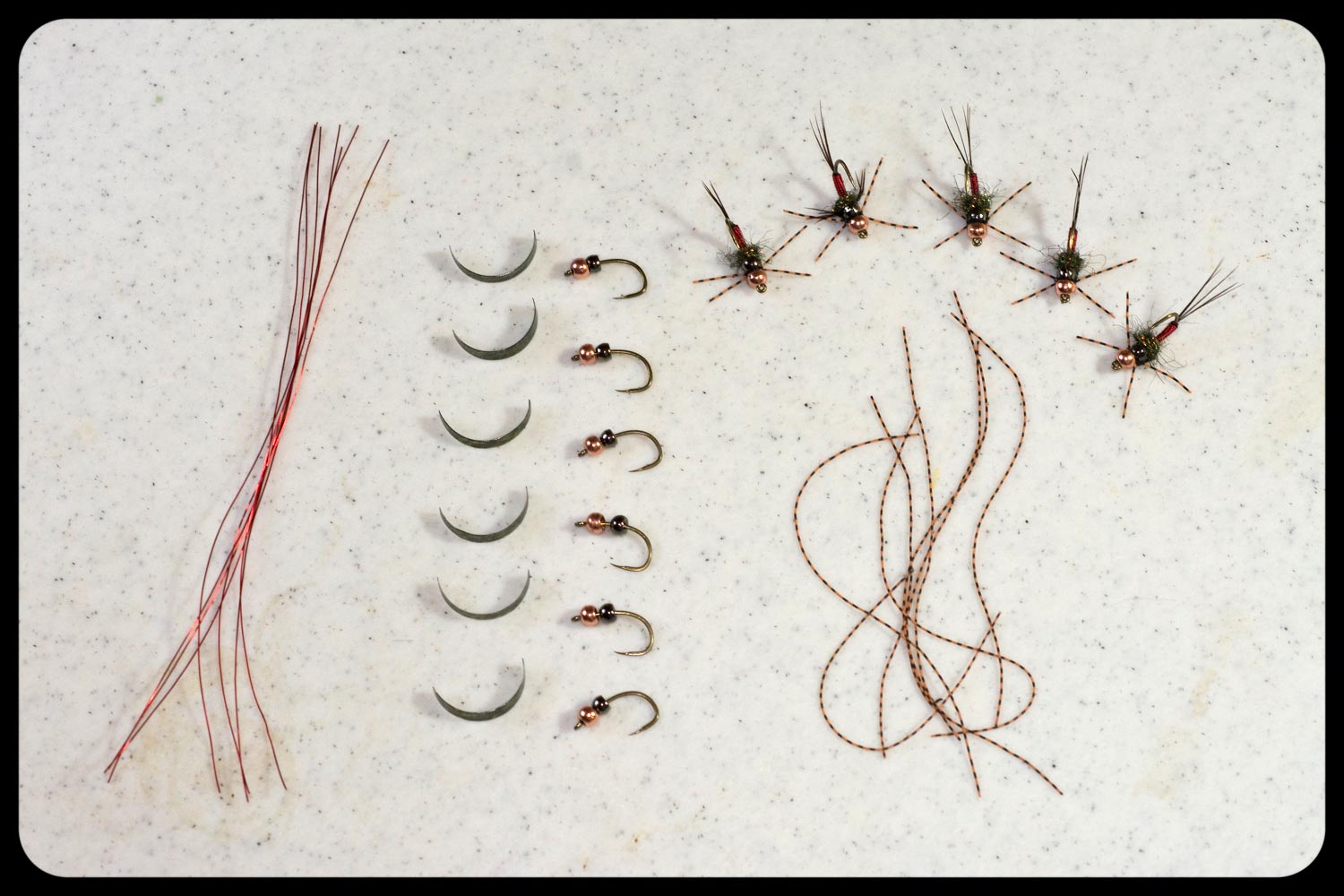If you tie flies and you’re looking for a way to increase your fly output, I’ve got a great fly tying tip for you today. I personally don’t have the luxury of extra time on my hands these days with running two companies and managing my family time. When my fly boxes start getting bare, I have to restock them as fast as possible. For years, I’ve been an advanced fly tier but I’ve never been one of those guys who can rip out a dozen flies in thirty minutes. I take that back, I can bust out a dozen san juan worms in thirty minutes, but that goes for most of us. For more complex fly patterns, it can be very beneficial to us if we take the time to get organized prior to wrapping the thread on the hook.
A while back, I took a serious look at the clock during my tying sessions and I found out that I needed to make some serious changes if I wanted to get the most out of my tying efforts. The first thing I realized is that I was wasting far too much time tying each fly, which was mostly due to me making the mistake of getting the materials out one at a time during the tying process. Little things like picking up and putting down scissors inbetween tying steps adds up quick. Then you add to that, taking one hook and bead out of the packet and cutting one piece of ribbing or other fly tying material at a time, and it doesn’t take a rocket scientist to figure out that this isn’t the most efficient way to go about fly tying. You can tie much quicker if you first commit to tying several of one pattern, and secondly, take the time to prepare your fly tying materials in advance.
The header picture above should give you a good idea of how I go about tying with efficiency these days. Notice that I’ve de-barbed and pre-beaded several hooks and then cut and organized many of the fly tying materials in advance that I’ll be using in the fly pattern. Unfortunately, you can’t do this for all tying materials. Some require you to tie them in as soon as you cut them off with scissors or pull them out of the packet, but that’s usually for just one or two materials in a fly recipe. Try this fly tying tip out next time you sit down at your vise. I think you’ll find like I did that you can tie up twice as many flies in half the time if you prep as much as you can in advance.
Keep it Reel,
Kent Klewein Gink & Gasoline www.ginkandgasoline.com hookups@ginkandgasoline.com Sign Up For Our Weekly Newsletter!

Your comment about picking up and setting down the scissors is a very good point. Years ago I learned to tie with scissors in my hand. It makes for a more productive session. However, certain scissors hold better than others and some will stick you more than others. I love my Dr Slick fine tip scissors but they draw blood. My universal scissors are the Anvil Ice product. They fit my hand just right, fine tipped, but not needle like. One word of caution when learning to tie with scissors is to be aware of the points and resist the urge to scratch your nose…. Don’t poke your eye out!
Folks have been doing this in kitchens for years, called mise en place. Same idea: a chef doesn’t have 45 minutes to make every dish, but if he preps everything that can be done prior to service he can speed that dish up to 15 minutes or so. Makes sense that it helps speed up fly tying as well! My problem is, I usually have too much crap strewn about my tying table to figure out a place to lay out all of the ingredients.
I remember taking my first fly tying class and half way through it my instructor challenged us to tie with scissors in hand. It’s kinda hard at first but once you get it, it does save a lot of time. Good tips G&G.
great advice. keeping area neat and organized is my bane…
Tight Lines<
Koz
Thanks for the tip. My favorite part of this post is the picture. the flies are not perfect. Each one is a little different. I get sick of seeing posts on other sites of nothing except perfectly tied flies with every hair and feather in place. THANK YOU!
Whilst speed is important it isn’t the only consideration of the production fly tier. economy of motion need also be matched with economy of material.
Wire is a cheap material (unless you buy it as fly tying wire). However, in your photo it makes my point. Rather than cut 6 lengths for the 6 flies cut one length sufficient for all 6 flies.
The individual lengths will each have a waste section that is discarded. Giving you 6 pieces of waste. One length will only generate one piece of waste from 6 flies.
That is how economy of material combines with economy of motion to increase production while reducing production costs..
Pingback: Tippets: Tying Preparation, Fishing Closures Urged in B.C. | MidCurrent
Which pattern is this? Look like would be good for trout and bream
Pingback: Tie Twice the Flies in Half the Time | Lackawanna Valley TU Blog
On the other hand, there is something very enjoyable about tying in a component, putting the scissors down, rotating the vice to gaze at the result, tie in another piece, rotate the vice, ……etc., etc.,…..you get it.